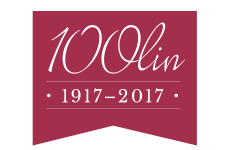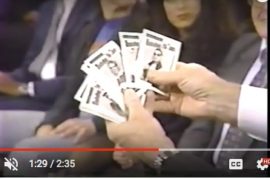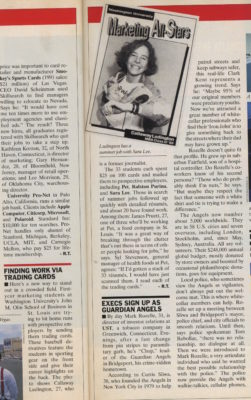Howard Wood, BSBA’61, grew up in Bonne Terre, Missouri, a farming community sixty miles from St. Louis. Both of his parents were school teachers and there was no question that he would go to college, but how to pay for it was a major obstacle. “We were as poor as church mice,” Wood says.
“Washington University was just like it is in these days. It’s a very expensive place to attend given some of the alternatives. And my first year’s tuition was $750.” That did not include room and board, Wood is quick to add. He will never forget the generosity of one man who made it possible for him to attend WashU.
“We had a gentleman in Bonne Terre by the name of Henry Day who owned a quarry in the county … St. Francois County where I grew up. And he offered a full scholarship each year to Washington University. I was on that scholarship as was my brother. And we were the only two that ever graduated on it. So it was kind of an unusual situation, but it was a very nice scholarship, and he was a Harvard graduate. But that’s how I got to Washington University; otherwise I would never have been able to attend.”
Wood was considered “an out-of-town student” when the majority of students lived within the metropolitan area and could take the streetcar to school. “There were very few dorm rooms, practically none,” Wood recalls. “The fraternities had most of the rooms for the men. There was no South 40. They didn’t have sleeping rooms in the sororities. So it was a little bit different back in 1957.”
Howard Wood had a successful career at Arthur Anderson before partnering with Olin alumnus Jerry Kent to launch Charter Cable. He has been a generous supporter of the Scholars in Business program and talks about the importance of scholarships in another video in this series.
Link to more Olin history on the Centennial website.






 The nine men and one woman formed the first graduating class of Washington University’s new business school. There had been one graduate the year before, Henry Duncker, but this was the first class, the first cohort, and the first woman to graduate with a degree from the School of Commerce & Finance, as it was known then.
The nine men and one woman formed the first graduating class of Washington University’s new business school. There had been one graduate the year before, Henry Duncker, but this was the first class, the first cohort, and the first woman to graduate with a degree from the School of Commerce & Finance, as it was known then. Pages from the 1920 Hatchet highlight the many activities that Margaret Haase participated in at WashU.
Pages from the 1920 Hatchet highlight the many activities that Margaret Haase participated in at WashU.

 That’s Callaway’s baseball card in Fortune magazine at left. The story featured the baseball card marketing scheme and quotes Syl Stevenson, then-general manager of health foods at Pet, who hired one of the Olin students after receiving the cards, “If I’d gotten a stack of 33 resumes, I would have just scanned them. I read each of the trading cards.”
That’s Callaway’s baseball card in Fortune magazine at left. The story featured the baseball card marketing scheme and quotes Syl Stevenson, then-general manager of health foods at Pet, who hired one of the Olin students after receiving the cards, “If I’d gotten a stack of 33 resumes, I would have just scanned them. I read each of the trading cards.”